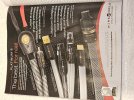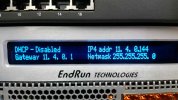- Joined
- Dec 21, 2018
- Messages
- 69
- Likes
- 174
G'Day Folks! Long time lingerer, I rarely post, but I'd love an opinion. I've subscribed to Stereophile my whole life and just got April. While the written reviews tend to be an advertisement for the product, John Atkinsons' measurements are what drew me to this mag and quite possibly got me into RF engineering.
On page 150 WireWorld has an ad for cables. They claim:
"...Platinum Starlight 8 Ethernet recreates the most transparent, resolving, detailed, natural and immersive performance..."
My question:
If a digital system, with error correction, can can sound better thru one type of cable, does that cable change bits? Because that's the only way it could change how the music sounds, right? They also claim a USB cable, for the low low price of ONLY $499, is better than others. Can someone please tell me if that's the way digital works? Thanks for your time.
On page 150 WireWorld has an ad for cables. They claim:
"...Platinum Starlight 8 Ethernet recreates the most transparent, resolving, detailed, natural and immersive performance..."
My question:
If a digital system, with error correction, can can sound better thru one type of cable, does that cable change bits? Because that's the only way it could change how the music sounds, right? They also claim a USB cable, for the low low price of ONLY $499, is better than others. Can someone please tell me if that's the way digital works? Thanks for your time.



